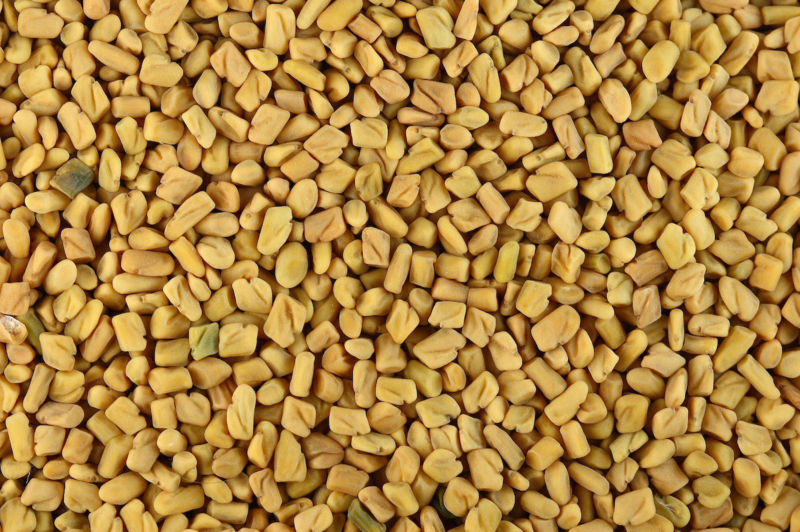
The seeds are used as a condiment or seasoning. The flavor of these seeds is mildly bitter and at the same time is slightly sweet. The seeds are rhombic in shape and usually they are yellow to amber in color. The Arabic word hulb (Helba in Egypt) for the seed resembles its Mandarin Chinese counterpart hu lu ba. Fenugreek is regarded as a herb native to the semi-arid regions of southeastern Europe, northern Africa, and western Asia, but is widely cultivated in other parts of the world. The word 'fenugreek' is derived from the two Latin words 'foenum-graecum' meaning Greek hay. It is known as Methi or Mithi in Hindi.
Nutritional and Medicinal Properties
The chemical components of fenugreek seed include iron, vitamin A, vitamin B1, vitamin C, phosphates, flavonoids, saponins, trigonelline, and other alkaloids. The seed is also high in fiber and protein. Fenugreek seeds are high on polysaccharide galactomannan. They are also a rich source of saponins such as diosgenin, yamogenin, gitogenin, tigogenin, and neotigogens. Other bioactive constituents of fenugreek include mucilage, volatile oils, and alkaloids such as choline and trigonelline. It is extensively recommended as a galactagogue (milk producing agent) for nursing mothers to increase inadequate breast milk supply. Supplements of fenugreek seeds are prescribed to lower serum cholesterol, triglyceride, and low-density lipoprotein in human patients. Egyptian, ayurvedic Indian, Greek, and Roman medical practitioners have since the earliest times have used it as an aphrodisiac and as a remedy for colds and sore throats, indigestion, and other complaints. Lydia Pinkham included fenugreek in her famous 19th century "Vegetable Compound" nostrum for menstrual aches. In present times fenugreek seeds are used referred to in case of menopausal complaints, heart disease, weight control and diabetes.








